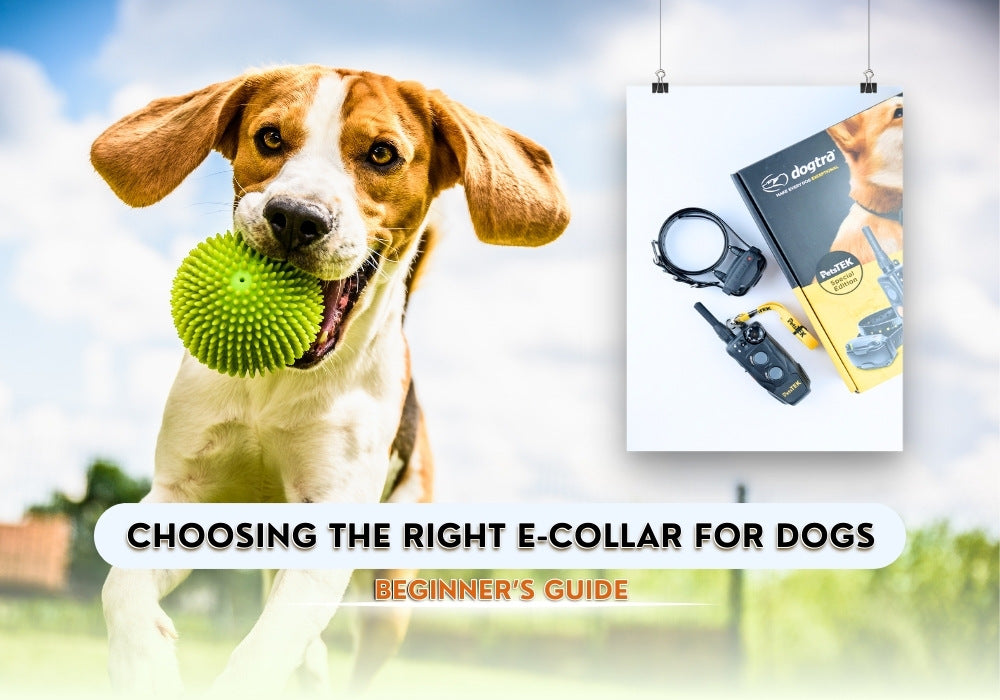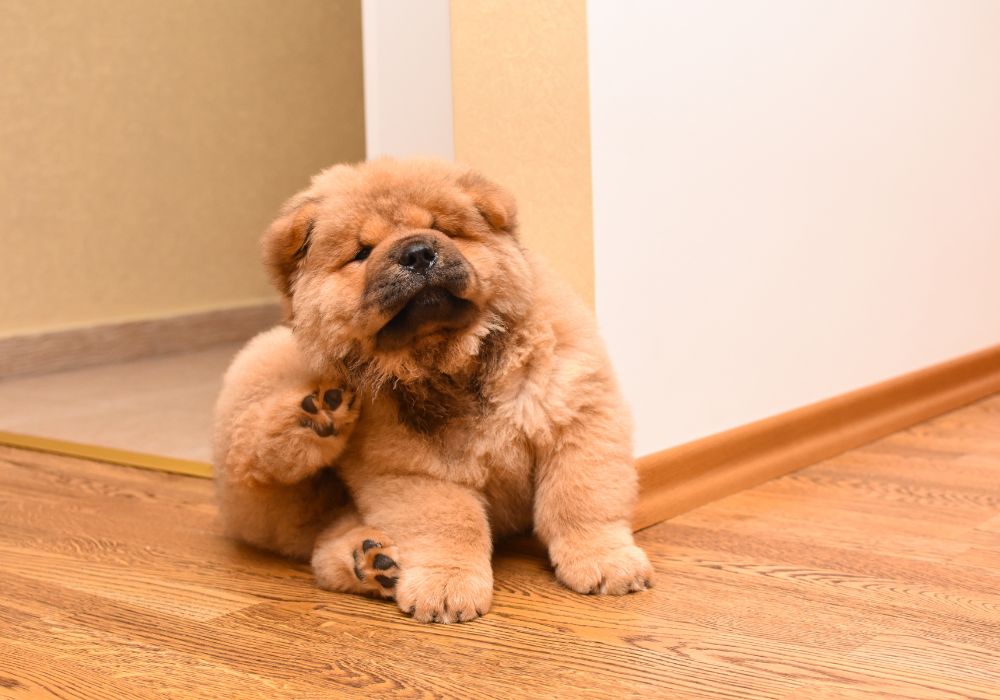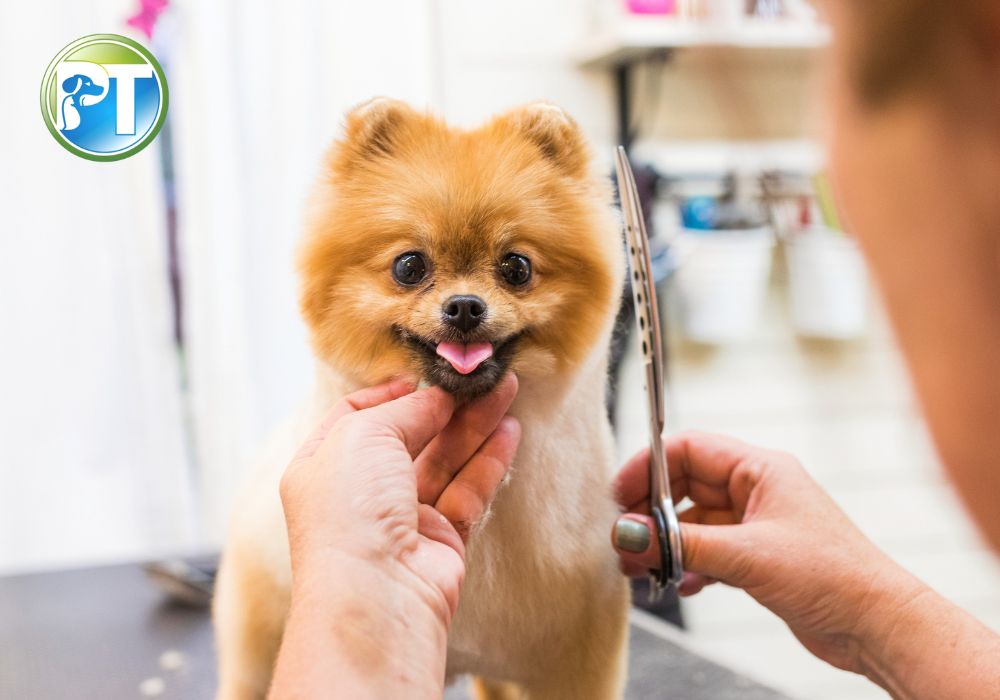5 Must-Know Dog Grooming Techniques Every Pet Owner Should Master

Ever wonder how some dogs always look so clean and happy? It's not magic – just good grooming. And the good news is, you don't need a fancy salon to achieve that for your pet.
This blog post unveils 5 essential dog grooming techniques that anyone can master at home. No special skills required, just love for your pup and a willingness to learn!
What Is Grooming in a Dog?
Dog grooming refers to the practice of cleaning, maintaining, and caring for your dog's fur, nails, ears, and teeth. It goes beyond just giving them a bath and involves various techniques and practices that benefit their overall well-being.
Is Grooming Good for Dogs?
We all know our furry friends deserve the best, and that includes taking care of their fur. But beyond just keeping them clean, regular dog grooming offers a surprising range of benefits for both your pup and you.
- A Healthier Coat and Happier Skin
Brushing and bathing remove dirt, dead skin, and allergens that can irritate your dog's skin and lead to infections. A clean and healthy coat translates to a happier and itch-free pup.
- Less Shedding, More Snuggling
Regular brushing helps remove loose fur before it sheds all over your furniture and clothes. This not only keeps your home cleaner but also prevents uncomfortable matting in long-haired breeds.
- Early Detection of Hidden Issues
During grooming, you might notice lumps, bumps, or unusual skin conditions that could indicate potential health problems. Early detection is crucial for ensuring your dog receives timely treatment.
- Building a Stronger Bond
Grooming can be a wonderful bonding experience for you and your dog. The gentle touch and positive reinforcement create a sense of trust and strengthen your connection.
5 Must-Know Dog Grooming Techniques
These five dog grooming techniques are the building blocks of a successful grooming routine. From brushing to bathing, nail trimming to ear cleaning, dental care to breed-specific grooming, we will provide you with all the steps you need to keep your pet well-groomed.
Dog Grooming Tip #1: Brushing
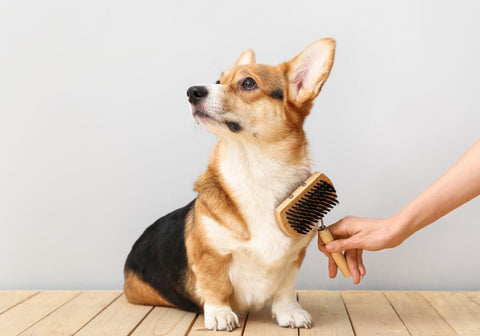
Regular brushing is the cornerstone of any dog grooming routine. Beyond removing loose hair and tangles, brushing promotes the distribution of natural oils, resulting in a lustrous and healthy coat.
To ensure successful brushing sessions, consider selecting a brush specifically designed for your pet’s coat type. For instance, long-haired breeds like Yorkshire Terriers or Afghan Hounds may benefit from a pin brush to tackle mats and tangles. Meanwhile, Pugs and Beagles may require a slicker brush for optimal results.
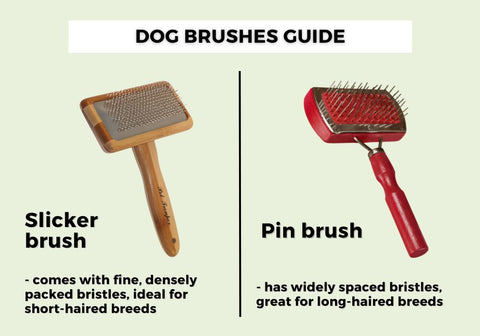
How Do You Brush a Dog's Fur?
To effectively brush a dog's coat, follow these steps:
- Begin from the head and work your way down to the tail.
- Brush toward hair growth to avoid discomfort and ensure effective brushing.
- Pay special attention to mat-prone areas like behind the ears and under the legs, gently removing tangles and mats.
- Use gentle yet firm strokes to remove loose hair and stimulate the skin.
- Maintain a patient and positive attitude and offer treats to make brushing a pleasant experience for your pet.
How Often Should I Brush My Dog's Fur?
Generally, most dogs benefit from regular brushing at least a few times weekly. Breeds with longer or thicker coats may require more frequent brushing to prevent matting. Conversely, breeds with shorter or low-shedding coats may need less frequent brushing.
Dog Grooming Tip #2: Bathing
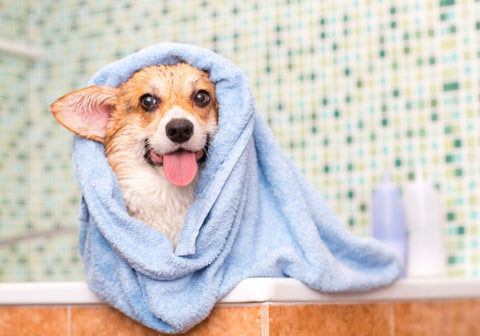
Bathing your pet helps remove dirt, debris, and odor, leaving your pet feeling fresh. Before you start, choose a shampoo specifically formulated for pets. Don’t use human shampoos. They can be too harsh and strip natural oils away from your pet’s coat. For example, oatmeal-based shampoos are gentle and soothing, perfect for pets with sensitive skin.
How to Bathe Your Dog?
- Fill the bathing area with lukewarm water and wet your pet's coat, avoiding their ears, eyes, and nose.
- Apply a small amount of shampoo and lather it into a gentle foam, starting from the neck and working down the body.
- Massage the shampoo into their coat, paying attention to areas like the chest, underarms, and tail.
- Thoroughly rinse your pet's coat to remove all the shampoo, ensuring no residue is left behind.
- Towel dry your pet by patting them gently or use a pet-friendly blow dryer on a low, warm setting.
How Often Should a Dog Be Bathed?
How often you should bathe a dog depends on factors, such as their breed, activity level, and skin condition. Some breeds, like Poodles or Bichon Frises, have low-shedding coats that require more frequent bathing to maintain their coat texture. In contrast, breeds like Huskies or Labrador Retrievers with double coats shed seasonally. These dog breeds may only need baths every 4-6 weeks, unless they get excessively dirty.
Dog Grooming Tip #3: Nail Trimming
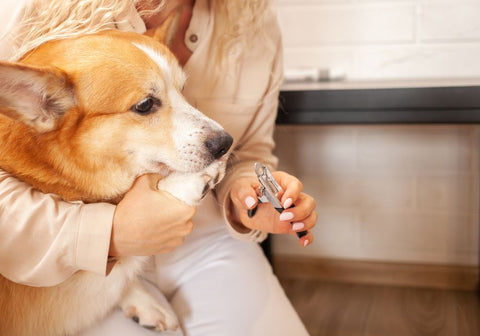
Regular nail trimming is important to prevent any issues associated with overgrown nails. Long nails can cause discomfort and affect the way your pet walks. To trim your pet’s nails, use a pet nail clipper or grinder designed specifically for their size.
Nail Clipper vs. Nail Grinder: Which Is Better?
Nail clippers are generally more affordable and faster to use. They're suitable for most dogs with light-colored nails where the quick is easily visible. However, they come with a higher risk of accidentally clipping the quick, causing pain and bleeding.
On the other hand, nail grinders offer a safer option for dogs with dark-colored nails. They allow for gradual removal of nail length, minimizing the risk of clipping the quick. However, they are more expensive, take longer to use, and require practice to master.
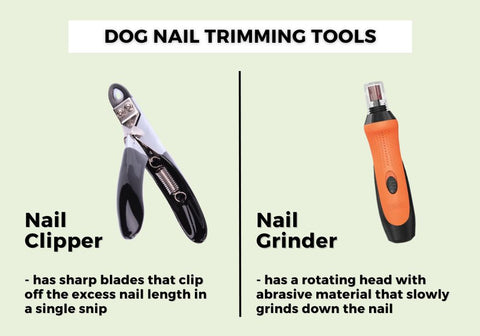
How Do I Trim My Dog's Nails at Home?
Cut your dog’s nails safely with this step-by-step guide:
- Find a quiet, well-lit area.
- Familiarize your pet with nail handling, using treats and praise.
- Identify the quick or the sensitive part inside a pet's nail that contains blood vessels and nerves. For pets with clear nails, the quick appears as a pink area inside the nail. In pets with dark nails, the quick is not as visible. Take extra caution when trimming dark nails to avoid cutting into the quick.
- Start by trimming a small portion of the nail. Avoid cutting too close to the quick.
- Hold the nail clipper or grinder at a comfortable angle and make smooth, controlled cuts or gentle grinding motions.
- As you trim, look for a small black dot in the center of the freshly cut area. This indicates that you are nearing the quick and should stop trimming.
- If your pet becomes anxious or stressed during the process, take short breaks to help them relax before continuing.
- In case of accidental cuts, apply styptic powder or cornstarch to the bleeding nail tip to help stop the bleeding.
- End the session on a positive note by rewarding your pet with treats, praise, and affection.
When Should I Trim My Puppy's Nails?
As a general guideline, most dogs require nail trimming every 4-6 weeks. However, dogs that don't naturally wear down their nails may require more frequent trims. Regularly check your dog's nails for signs of overgrowth. You can also consult a veterinarian or professional groomer for personalized advice.
Dog Grooming Tip #4: Ear Cleaning
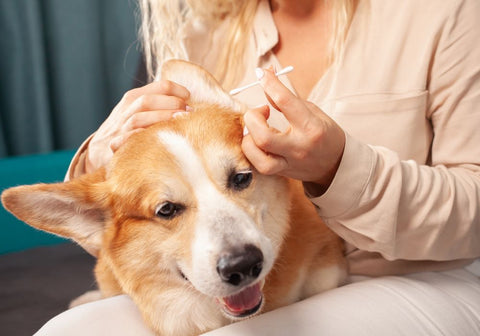
Regular ear cleaning is an essential part of your dog's grooming routine. Their floppy ears can trap moisture, dirt, and debris, creating a breeding ground for bacteria and yeast.
The Right Tools for the Job
For safe and effective ear cleaning, utilize the following:
- Dog-safe ear cleaning solution: Never use human ear drops, alcohol, or hydrogen peroxide on your dog's ears. These can be irritating and harmful. Invest in a veterinarian-recommended or commercially available dog-specific ear cleaning solution.
- Cotton balls or gauze squares: Avoid using cotton swabs deep in the ear canal as they can push debris further in and potentially damage the eardrum.
How Can I Clean My Dog's Ears at Home?
- Have the ear cleaning solution and cotton balls readily available.
- Using one hand, gently hold the ear flap upright, exposing the ear canal.
- Drip a few drops of the ear cleaning solution directly into the ear canal, avoiding contact with the eardrum itself.
- Gently massage the base of the ear for several seconds to help loosen any dirt or debris.
- Use a cotton ball or gauze square to gently wipe the outer ear canal and surrounding area, removing any visible dirt or debris. Do NOT insert the cotton ball or gauze deep into the canal.
- Clean the other ear using the same process.
Can You Use Baby Wipes to Clean a Dog's Ears?
While baby wipes may seem like a good option, using them to clean your dog’s ears is not recommended. Baby wipes are not designed for ear cleaning and may contain ingredients that could irritate your dog’s ears. Use a veterinarian-recommended ear cleaning solution for best results.
Dog Grooming Tip #5: Dental Care
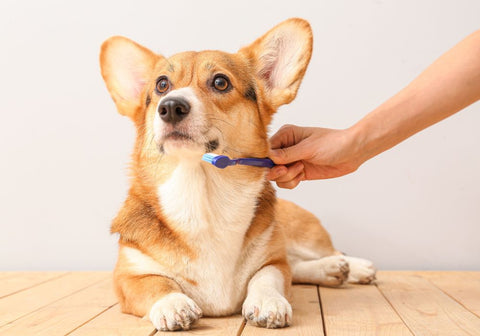
Just like humans, dogs need proper dental care to maintain healthy teeth and gums. While they may not get cavities in the same way we do, neglecting their oral hygiene can lead to serious health problems.
Here's why dental care for your dog is important:
- Preventing Periodontal Disease: Dogs are susceptible to periodontal disease, a progressive bacterial infection that affects the tissues surrounding the teeth. If left untreated, it can lead to painful inflammation, tooth loss, and even systemic health problems.
- Promoting Overall Health: A healthy mouth contributes to your dog's overall well-being. It prevents bad breath, reduces the risk of oral pain, and contributes to their general health and happiness.
- Early Detection of Issues: Regularly checking your dog's teeth allows you to identify potential problems like inflamed gums or excessive tartar buildup early on.
How to Properly Brush Your Dog’s Teeth?
- Use a pet toothbrush and toothpaste formulated for pets. Never use human toothpaste, as it contains ingredients that are harmful to dogs.
- Start by touching your pet's mouth and gradually introduce the toothbrush and toothpaste.
- Use gentle circular motions to brush a few teeth at a time, focusing on the gum line.
- Offer praise, treats, or rewards to create a positive association with toothbrushing.
- Gradually increase the brushing duration and work your way to brushing all the teeth.
- Provide vet-approved dental treats or toys to support oral health.
Is It OK to Brush a Dog's Teeth Every Day?
Yes. Brushing a dog’s teeth every day is generally advised. This removes plaque and bacteria before it hardens into tartar, minimizing the risk of periodontal disease. However, if daily brushing is not possible, brushing a few times a week can still make a significant difference.
Bonus Tip
Dog grooming doesn't have to be a chore. Make it a bonding experience by offering your dog praise and treats throughout the process. This will not only keep them happy and cooperative but also reinforce positive associations with grooming.
Lastly, don't hesitate to consult a professional for specialized care and ensure your furry friend gets the pampering they deserve.
You might also enjoy...
-
Posted in
Pet Health
